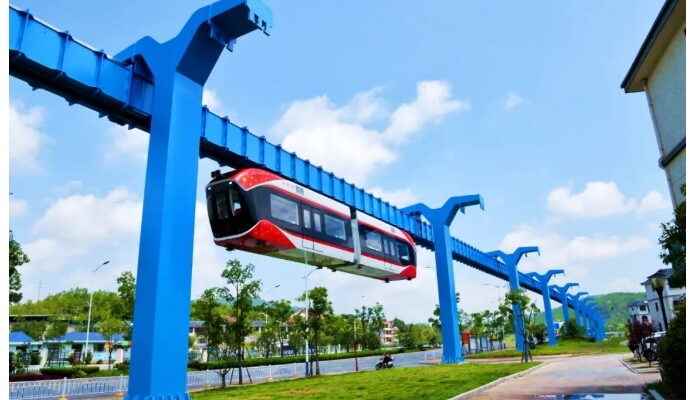According to an article from South China Morning Post, China this month launched its “Red Rail”, the world’s first maglev line. The Maglev “sky train” can stay afloat thanks to permanent magnets, even when there is no power supply.
The 800-meter-long experimental rail is located in southern China. A typical Maglev train (also known as magnetic levitation train) glides over its track, is supported by magnetic repulsion and propelled by a linear motor. This one, on the other hand, moves under the track at a speed of 80 km/h. It operates approximately 10 meters above the ground and has no physical contact with the rail.
After a few tests, local authorities indicated that the line could even reach more than 7 kilometers and that its maximum operational speed could reach 120 km/h.

The Red Rail uses powerful magnets that produce a constant force of repulsion strong enough to suspend an 88-passenger train in the air. These permanent magnets are present in both the rail and the arm that surrounds the train, causing the arm and the train to repel each other, and suspend the train.
According to researchers from Jiangxi University of Science and Technology, the floating train is more efficient than other maglev systems because only a small amount of electricity is needed to propel it, the technology generates little electromagnetic radiation and its construction cost is 10 times lower than that of a metro.

Conventional Maglev lines that use electricity are bad for the environment, as the strong electromagnetic field they generate can have a negative effect, including on the health of people living nearby.
Despite all its advantages, floating Maglev technology presents many challenges, including maintaining train stability in an unpowered floating state. Researchers have made breakthroughs in train control and operational safety using new technologies like artificial intelligence.
Source: ZDNet.com
